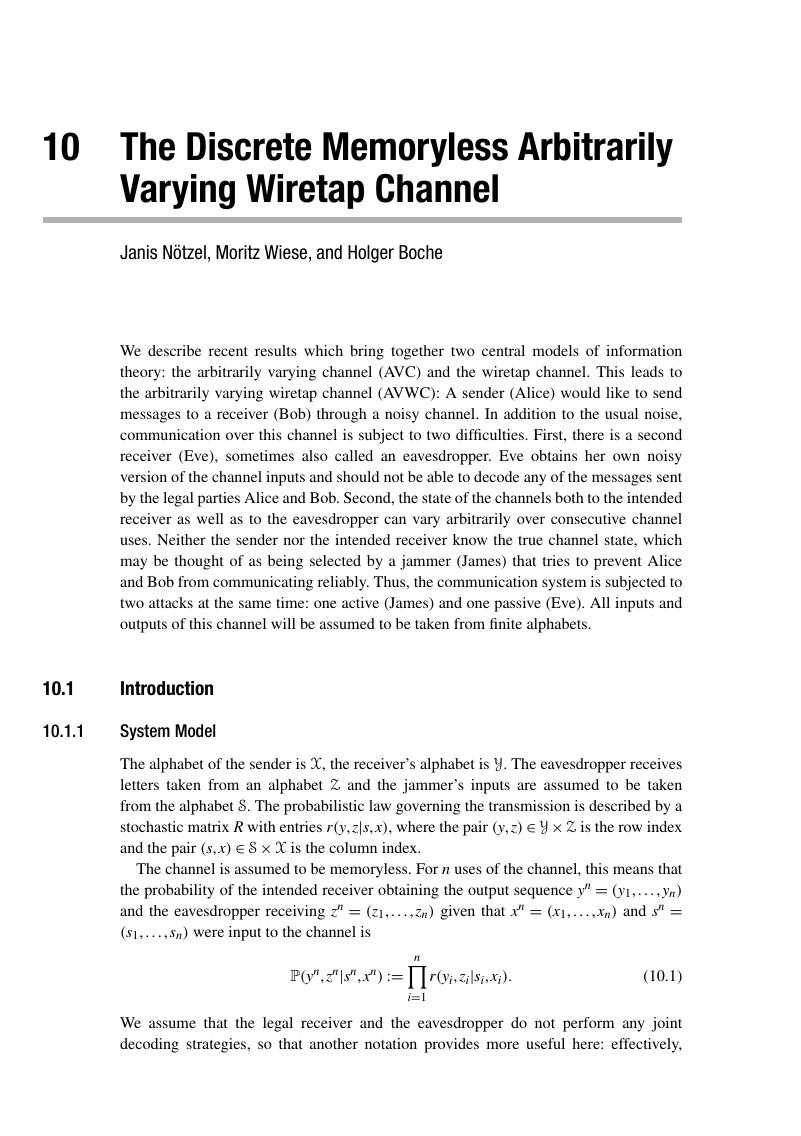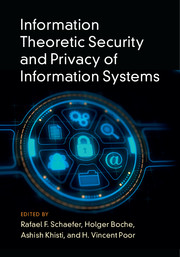Book contents
- Frontmatter
- Contents
- List of Contributors
- Preface
- Part I Theoretical Foundations
- Part II Secure Communication
- 5 Secrecy Rate Maximization in Gaussian MIMO Wiretap Channels
- 6 MIMO Wiretap Channels
- 7 MISO Wiretap Channel with Strictly Causal CSI: A Topological Viewpoint
- 8 Physical-Layer Security with Delayed, Hybrid, and Alternating Channel State Knowledge
- 9 Stochastic Orders, Alignments, and Ergodic Secrecy Capacity
- 10 The Discrete Memoryless Arbitrarily Varying Wiretap Channel
- 11 Super-Activation as a Unique Feature of Secure Communication over Arbitrarily Varying Channels
- Part III Secret Key Generation and Authentication
- Part IV Data Systems and Related Applications
- Index
- References
10 - The Discrete Memoryless Arbitrarily Varying Wiretap Channel
from Part II - Secure Communication
Published online by Cambridge University Press: 28 June 2017
- Frontmatter
- Contents
- List of Contributors
- Preface
- Part I Theoretical Foundations
- Part II Secure Communication
- 5 Secrecy Rate Maximization in Gaussian MIMO Wiretap Channels
- 6 MIMO Wiretap Channels
- 7 MISO Wiretap Channel with Strictly Causal CSI: A Topological Viewpoint
- 8 Physical-Layer Security with Delayed, Hybrid, and Alternating Channel State Knowledge
- 9 Stochastic Orders, Alignments, and Ergodic Secrecy Capacity
- 10 The Discrete Memoryless Arbitrarily Varying Wiretap Channel
- 11 Super-Activation as a Unique Feature of Secure Communication over Arbitrarily Varying Channels
- Part III Secret Key Generation and Authentication
- Part IV Data Systems and Related Applications
- Index
- References
Summary

- Type
- Chapter
- Information
- Publisher: Cambridge University PressPrint publication year: 2017

